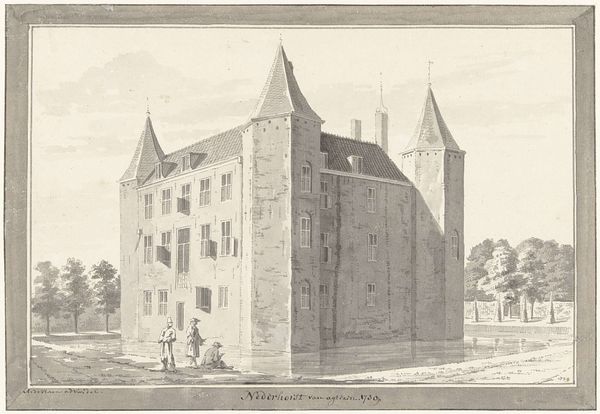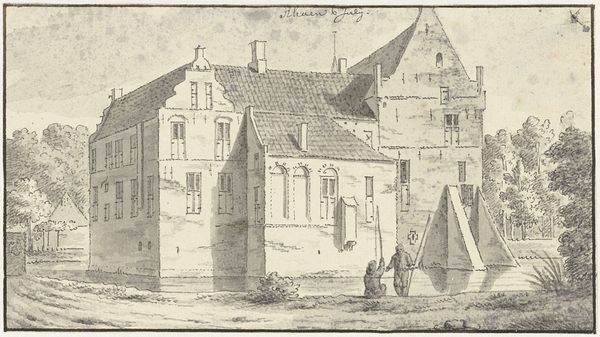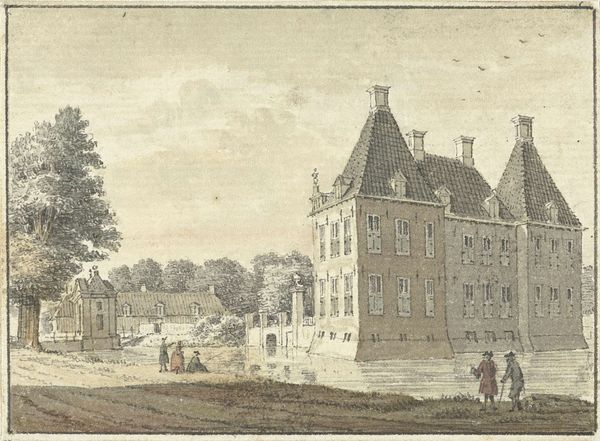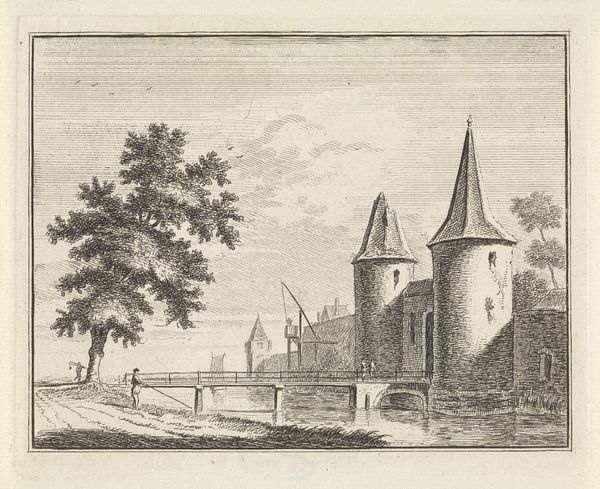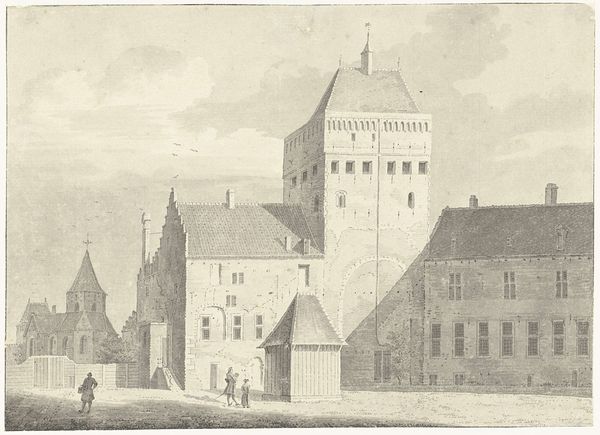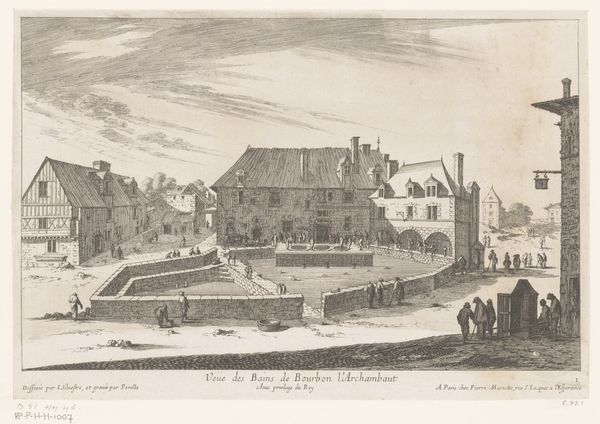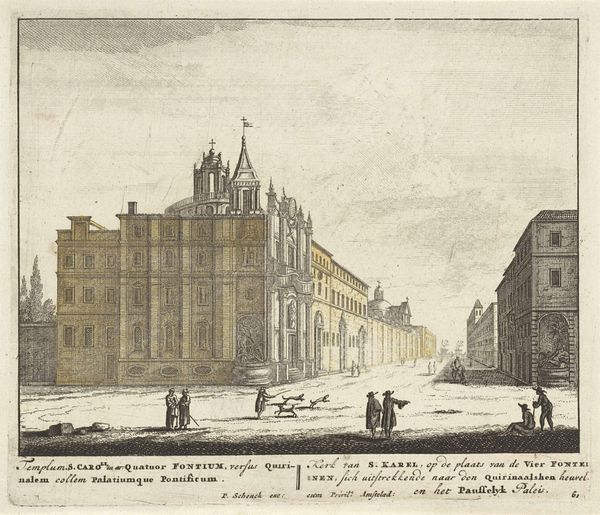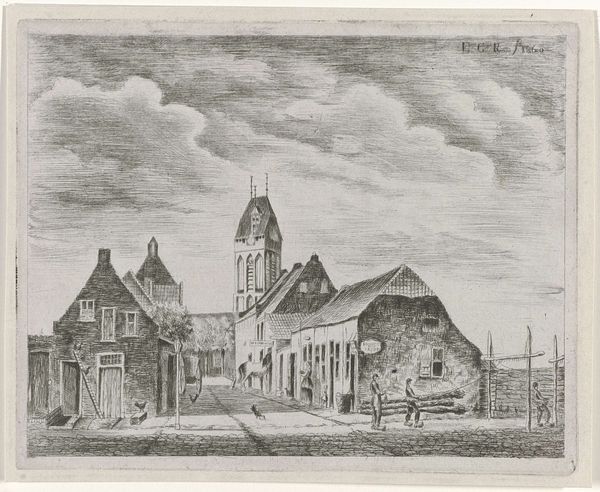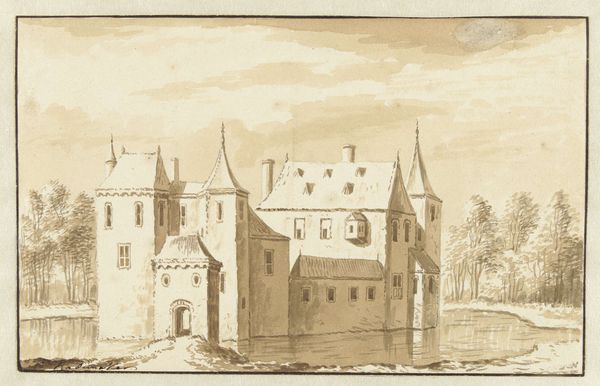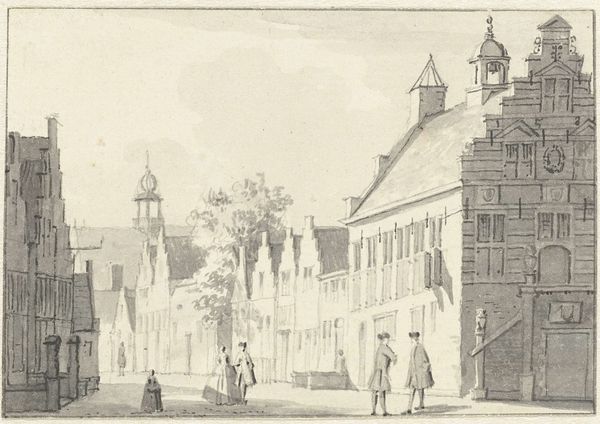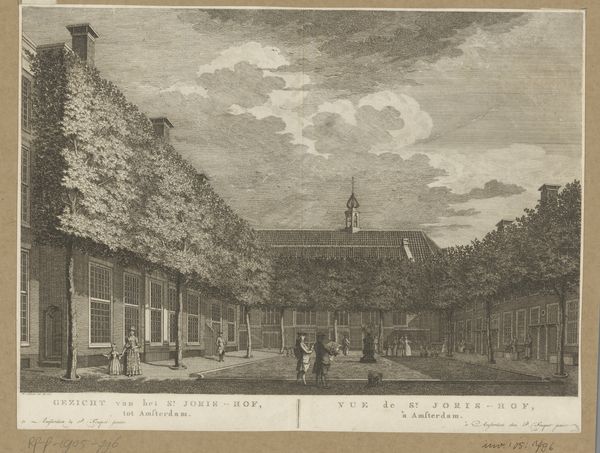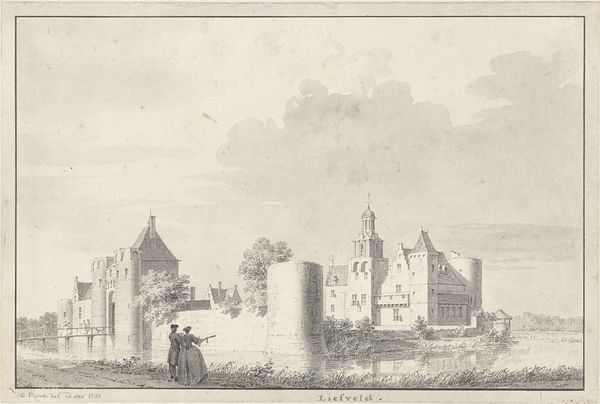
drawing, paper, ink, architecture
#
drawing
#
baroque
#
landscape
#
etching
#
perspective
#
paper
#
ink
#
cityscape
#
history-painting
#
architecture
Dimensions: height 217 mm, width 313 mm
Copyright: Rijks Museum: Open Domain
Editor: This is Cornelis Pronk's "Gezicht op de kerk en het huis te Ootmarsum" from around 1729 to 1730. It’s an ink and paper drawing of a cityscape that's just lovely, and the architectural details are really eye-catching. I’m curious about how you interpret this work, especially given the medium. Curator: Well, I’m immediately drawn to the process itself. Consider the labour involved in rendering such detailed architectural forms using ink on paper. The sheer volume of lines, the precision required – it speaks to a deliberate, almost industrial, approach to artmaking. We might even ask: what was the economic status of paper at the time and could that be a factor into what the artist has rendered? Editor: That's interesting, I hadn't thought about the materials in terms of labor and access! So you see the making of the drawing as being almost... a production process? Curator: Exactly! And think about the function of such a drawing. Was it purely aesthetic, or did it serve a more practical purpose, like documentation or even real estate? How does the social function influence our reading of its value? Editor: I see. So instead of focusing on the artistic expression, you’re drawn to the materials, the effort involved, and the purpose the drawing served within its society. It shifts the focus from the artist's genius to the broader context of production and consumption. What do the clothes of the figures represent in terms of status in the art as well as in real life? Curator: Precisely. By looking at these buildings through the lens of material conditions, we move beyond appreciating mere artistry. We can analyze its cultural footprint and labor. And yes, observing those figures gives us further insights in who could have commissioned the piece in the first place, no? Editor: I understand. I didn’t initially consider all the work behind it or how paper and ink might influence its reception. It makes you think about art as more than just an object. Curator: Indeed. It’s about understanding art as a product of its time, shaped by the hands that made it and the society that consumed it. We often see beauty, but what about understanding how the aesthetic creation truly came to be?
Comments
No comments
Be the first to comment and join the conversation on the ultimate creative platform.
